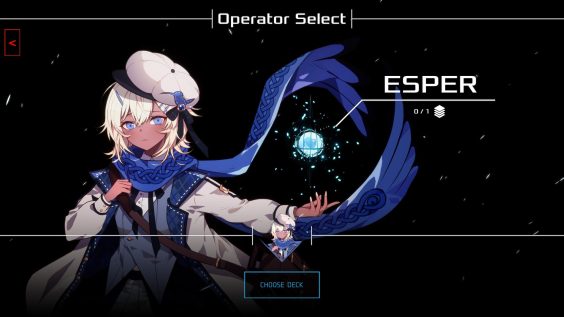
The guide has a bunch of general tactics that are universally applicable as well as clear videos for the Black Anchor and Dragoon’s Comet dungeons.
Introduction
Black Anchor and Dragoon’s Comet are a big difficulty spike and can be a rude awakening to players who do not have a good grasp on the fundamentals of Quantum Protocol. This guide hopes to take players who understand the rules of Quantum Protocol and teach them how to play it at a level sufficient to beat the story and the post game Ascension levels.
If you only care about the dungeons and not the general guide you can skip to the end where there are video guides for Black Anchor and Dragoon’s Comet.
Dealing with waves
Plan your actions in batches
- Enemies are predictable but must be planned for in advance. If two enemies are attacking next turn then it is too late to block both, you should have placed a blocker on a previous turn so that you only had one thing to deal with now instead of two.
- This means that the most efficient way to play QP is by planning and then taking your turns in batches. Generally you want to plan far enough ahead to deal with the next action of every enemy in play. Eg if there are 4 enemies in play then you should plan all your actions such that all 4 of those enemies are dead or being blocked, take those actions and then consider how the board has changed.
- Normally this means planning about 5-8 turns in advance.
- You should know exactly what the board state will be after your batch of actions. The key things to watch for are enemies with reactions and death triggers. The most common ways to take accidental damage all involve mirrors that reflect your damage or interceptors which attack every time an enemy program takes damage.
- When figuring out what will happen note that enemies act from left to right on the bottom row, then left to right on the top row.
Assess enemy threat levels
- Generally enemies fall into three categories:
- Must kill: These are enemies that deal unavoidable damage or make it impossible to play the game. You want to focus on killing them before they take a turn or before their passives disrupt your play too much.
- Safe to be last: These are enemies that you are happy to kill last. Generally they are low impact when they take their turns and they do not ruin your position on death. A classic example is the 0/3 wall that will do absolutely nothing while you take your time killing it.
- Unsafe to be last: These are enemies that have a nasty surprise if they are the last thing you kill on a wave. Examples could be mines that will destroy your board when you kill them, pushing you to the next wave with nothing in play. ‘When this dies the player discards their hand’ is another example. Starting the next wave with no resources in hand can lead to problems.
Ideally you should kill enemies in this order Must kill > Unsafe to be last > safe to be last.
Be efficient
- Action economy is a very important concept in QP.
- Wasting time leads to enemies acting more times than they should and falling behind on wave alert which can make enemies act even faster or cause direct damage.
- As part of planning your actions in batches you should make sure each move is doing something.
- Don’t commit more units to a column than you need to kill the enemies in the column. Never press your deck just to pass time unless you have confirmed there is no positive action you can be taking.
- Kill enemies efficiently when possible. Attacking a 5 life enemy twice for 4 means 3 damage that could have been killing a different enemy has instead done nothing.
Be fearless with your board and cautious with your health
- All boards are temporary in QP, at some point you are going to have to use reprogram, and when you do it does not matter if you have 8 programs in play or 0.
- On the other hand your life very rarely recovers, so taking direct damage will permanently weaken you for the rest of the dungeon.
- This means you should be very free with sacrificing programs to protect your life total or execute your rows to finish off enemies quickly.
Example
Here we are playing Hana and the enemy board has 3 types of programs:
- Guardians. 5 hp units that gain attack when the player draws a card.
- White Talisman. 2hp shield creatures that become a copy of the enemy program that dies.
- Dagger. 2 attack creatures that will attack any time the player plays a card.
This is the threat assessment:
- Guardian’s are must kill. Since we cannot play more units with the daggers in play the guardians have to die so we don’t get overwhelmed by losing 3 units every time the enemies take a turn.
- Daggers are unsafe to leave last. We cannot realistically play any cards until the daggers are dead, this means that if we left them for last we would enter the next wave with only the remains of this board, and we would not be able to reprogram so we would have no hand or deck either.
- Talismans are safe to leave last. With this board set up they will turn into guardians. Guardians at a much slower speed are not threatening because we will have killed the daggers by then so we are free to play more cards to block them.
Enemies attack in 5 turns, so before we do anything we want to plan out our next 5 turns so that we have dealt with the immediate threats and preferably the daggers as well so that we are free to play cards again.
With this set up I would:
- Turn 1 and 2: Use both bow active abilities to deal 4 damage to their opposing guardians.
- Turn 3: Execute both bows to finish off the guardians. This turns the white talismans into guardians.
- Turn 4: Quick action both katana’s to hit the daggers for 2 each.
- Turn 4 continued: Execute the back row to finish off both daggers.
- Turn 5: Use shide to block the last guardian.
After this cycle the daggers and threatening guardians are dead, letting us reprogram and play out the rest of the wave without too much worry.
Setting up for the next wave
The start of a wave is almost always the most dangerous since it is before you have killed any enemies. That means that it is very important that you set yourself up to be strong when you transition between waves so that you are able to keep up. When playing QP you want to focus most of your time playing the start and end of waves correctly. As long as you start each wave with a good set up and a well planned first batch of actions the rest pretty much plays itself. Just focus again at the end so you can have a good setup for the next wave.
What does a good start look like
- Have units in play
- Have units opposite where enemy units will spawn
- Have units able to attack
- Have turn draw at a low number so you can attack twice
- Have cards in your hand
- Have your hero power ready to go
How to set up a good start
- Make sure you reprogram at the right time. If you advance to the next wave with no cards in play and no cards in hand you are going to have a very bad time.
- If you have a weak board and low deck you should consider reprogramming and replaying a board before going to the next wave.
- If you have a weak board and hand and do not have access to reprogram STALL THE WAVE UNTIL YOU CAN FIX THIS
- This is why evaluating safe enemies is important. Having enemies that you can leave alive while setting up is important. Ideally they have high hp to let you more easily control wave alert while you are preparing.
- If you have exhausted programs in play, consider turn drawing so they can be activated again and possibly even waiting till you are near your next turn draw again.
- LOOK WHERE THE NEXT SET OF ENEMIES ARE SPAWNING (Top left corner of the screen). There is no point having programs in play if they are not in the right positions to contest the next wave. Move your units opposite to where enemies are going to spawn before you kill the last enemy.
- Charge your hero power when you can. Hero power is charged up by using execute. If you are going to reprogram anyway consider using execute instead of attacking to charge your hero power for emergencies.
Example
In this example I have only 1 shide.hana in hand and a katana in deck for active cards. This is unacceptable so I must reprogram. If I kill this enemy with the katana instead the next wave will be very dicey.
After reprogramming I play out my board in the columns the enemies next wave will spawn in. I will have access to reprogram before I run out of actions from my current cards and I have strong burst set up for the next wave. Wave threat is a little high, but it should be easy to fix this when I push the phase and start dealing with the next wave.
Boss specifics
- Bosses can be played like normal waves except you have to figure out when you are ‘setting up for the next wave’.
- Consider if you can deal with the bosses threats and find a safe time to reprogram if your current board/hand/deck does not have answers to it.
- For example if a boss is going to create a swarm of 5 enemies for you to kill then you want to have access to aoe within about 6 actions to answer it. If all of your aoe is in the discard pile then trying to reprogram and find it again within 6 actions is going to be tricky, especially if there are other attacks you need to deal with as well.
- Remember, the most common ways to die are running out of cards or forgetting about enemy triggers!
Deck Building
- The most important thing to consider when deck building is making sure you don’t run out of cards.
- The most common cause of deckbuilding related losses is if you put too many cards in your deck and can’t find reprogram in time, leading to you running out of cards in hand and having to just pass turns while waiting to draw and reactivate your programs.
- A good rule of thumb is to keep your deck to around 7-9 cards if you are relying purely on reprogram to keep your hand healthy.
- Decks with lots of card draw or tutors can go higher, and 20 is perfectly reasonable for decks like dragoon or idol that want to build boards and tutor from their deck.
- Situational cards should be put in storage to be fetched with cache hit. You are going to draw your entire deck repeatedly, so there is no room for cards that won’t do anything some of the time. Cache hit can find them when they are useful, and find something else when they are not.
- Keeping 1 generically good card in storage can be a good idea so cache hit always has a good target.
- Start by putting all your best cards in the deck, then put in cards that fill in the holes in your strategy and support your strong cards.
- Try to have 1 source of delay in your deck. Delay is very very strong but it does not stack, so the first time you delay enemies is amazing but any additional delay you draw is a dead card.
- If your deck is larger you can afford to have more than 1 source of delay in it, but when in doubt it is better to have 1 source of delay in your deck and another in storage to grab with cache hit.
- If a card is situational, weak, or does not fit what the better cards in your deck want to do, then don’t put it in your deck. Every bad card in your deck reduces the chances of drawing your good cards and makes it harder to reprogram when you need to.
- Always play reprogram. Cache hit should be played unless you have a very good reason not to.
Example
So here is an example of what your deck + storage might look like half way through a dungeon.
- First we put in reprogram, cache hit and the strongest and most generalist cards. These are the 3 katana, the bow, reprogram and cache hit.
- Then we add things to fill out our deck. Force gives us a quick damage source in our otherwise fairly slow deck. Shide lets us refresh bow to greatly increase the total damage cap of our deck.
- Looking at the rest of the cards they seem too situational for cache hit to always be good, so we take out 1 katana to ensure cache hit always has a good target.
- The rest of the storage might come up but is either low power or too conditional to be good. Reincarnation returns a card from our discard, but it does not refresh the once effects that hana rely on. doubleExecute is powerful but only in very rare board states, a perfect cache hit target.Tori is a strong card but we do not really have the support for it, it is better to just play shide and replay bow if we need more single target damage. Crystal ball is very weak so probably never be used, if we really need it we can cache hit for it. Rush mega is literally useless unless we are on exactly 1 life, so it can sit in storage for now.
Following these changes our deck looks like this.
Here we come to an end for Quantum Protocol Intermediate Guide + Black Anchor – Dragoon’s Comet clear videos hope you enjoy it. If you think we forget something to include or we should make an update to the post let us know via comment, and we will fix it asap! Thanks and have a great day!
- Check All Quantum Protocol Posts List


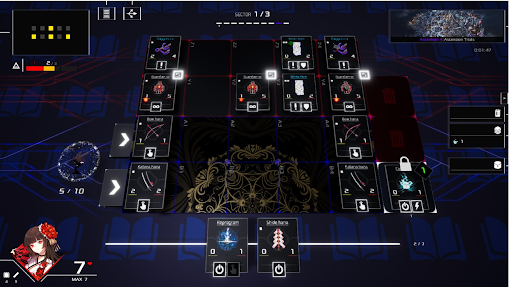
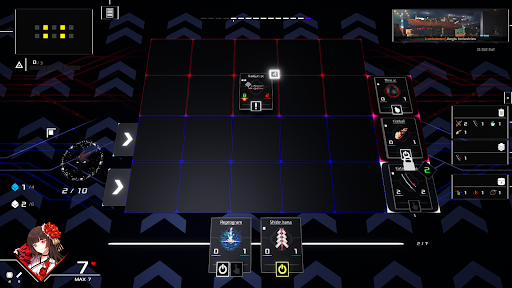
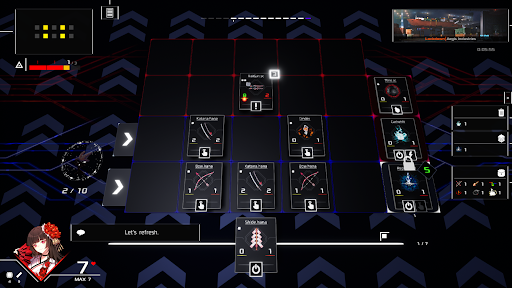
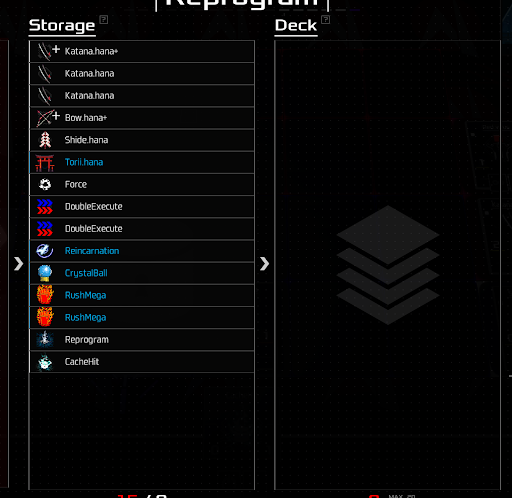
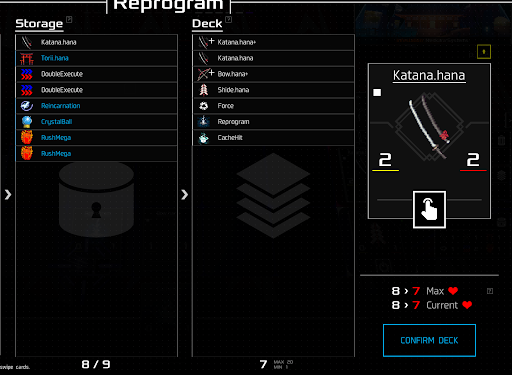
Leave a Reply